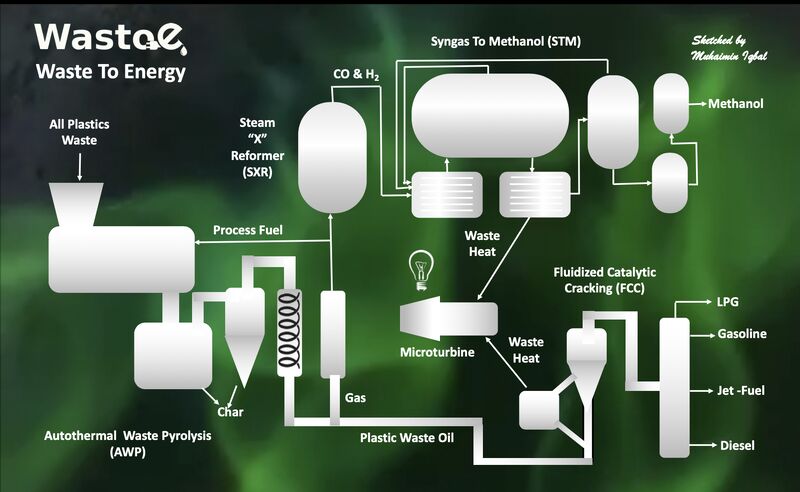Power of Waste Heat
Advanced Renewable
Tue , 14 May 2024 12:20 WIB

Several types of new energy are actually already abundantly available around us, which I have previously shared is energy efficiency, namely if we can increase efficiency from 25% (ICE - Gasoline) to 50% (Reformed Gasoline Fuel Cells), for example, it's like we are finding 100% new energy.
What is no less abundant is the energy that has been wasted in the form of waste heat, in the power generation industry for example - the energy wasted in the form of waste heat is greater than the energy that has been successfully converted into electricity, which is why the average energy efficiency in power plants is only in the range of 30%.
The question then is how to utilize this waste heat? This question has been answered, among others, by the 19th century Scottish scientist W.J. Macquorn Rankine which later gave birth to what we know as the Organic Rankine Cycle (ORC).
It's as simple as a steam engine, when water is heated it evaporates into water molecules, these molecules become energy that can drive a turbine and ultimately become electricity. However, because the molecular weight of water (H2O) is only 18, and it requires a temperature of 100 degrees Celsius to evaporate, the power of this water is not too great and it requires relatively high heat to evaporate into powerful water molecules.
So, when we replace the fluid that was originally water with another fluid that has a molecular weight that is 7 times the molecular weight of water, and this fluid evaporates below a temperature of 60 degrees Celsius, for example, then we will be able to design a much smaller 'steam turbine' and with a much lower temperature to produce the same power as that produced by the water steam turbine mentioned above.
So the basic theory of W.J. The Macquorn Rankine mentioned above is what we use at the Advanced Renewable Organization (ARO) to design a waste heat capture machine and convert it into electricity which we call ORISYS (Organic Rankine System) as in the sketch below. I have often shared the AI version of the image before too.
Depending on the fluid used, this ORISYS can work to capture waste heat in a temperature range of 80 -400 degrees Celsius, and can be arranged in 2 - 3 tiers, the first ORISYS captures the initial waste heat, the second captures the waste heat that comes out of the first ORISYS, and the third captures waste heat from the second ORISYS.
If up to this super modern era we were still focused on searching for new energy in the form of 'what', now is the time to widen our focus to 'how', namely how we utilize the energy that is already in front of our eyes abundantly to become our endless new energy.
Pos Lainnya
Jalur Cepat Net-Zero Emissions
May 14, 2024
Plastics To Fuels Integrated Process
May 14, 2024
Pusat Keuntungan CCU
May 14, 2024
Truly Green EV
May 14, 2024
Pembawa Hidrogen yang Sangat Efektif : Hidrokarbon
May 14, 2024
Kategori
Renewable Energy






Silakan mendaftar terlebih dahulu!
Untuk memposting komentar baru. Anda harus login terlebih dahulu. Masuk
Komentar
Tidak ada komentar